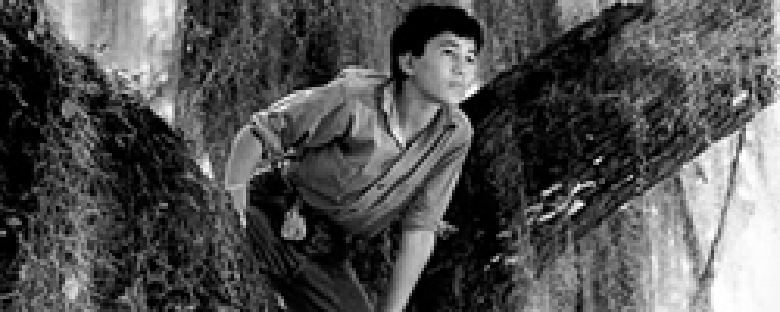Reviews
Robert Flaherty
USA, 1948
Credits
Review by Matt Bailey
Posted on 11 July 2004
Source Home Vision Entertainment DVD
Louisiana Story tells the tale (and a tall tale it is) of a boy and his raccoon companion who co-exist quite happily and peacefully with a monstrous, steam-driven oil derrick in the bayou swamp that is their front yard. It should come as no surprise that Standard Oil commissioned the film. What does come as a surprise is that the film has some of the most beautiful images I’ve ever seen in a movie yet, at the same time, some of the clunkiest, most awkwardly staged scenes I’ve ever seen outside of my high school’s production of Oklahoma.
As with all Flaherty films, this one too deals with man in conflict with nature. The film (and many of the reviews and criticism written about it) would have you believe that it’s about what happens to a community (and to a young boy who acts as the avatar of that community) when an oil rig is plopped down in a peaceful swamp. Well, what happens is that the boy can’t find his raccoon and catches a really big fish. And it wouldn’t be a Flaherty film unless there was a terrifically lengthy scene of some poor animal being hunted, captured, and skinned — this time an alligator.
Robert Flaherty acted as his own cinematographer on most of his films, but chose Richard Leacock to shoot this particular film. Leacock would eventually go on to be an accomplished documentary filmmaker in his own right, working first with Robert Drew and Drew Associates, the television documentary group that spawned the careers of the Maysles brothers and D.A. Pennebaker and then later forming a production company with Pennebaker where they made several important and influential films in the “direct cinema” mode. Leacock’s cinematography in Flaherty’s film is nothing short of astounding. The images of the young boy paddling his canoe through the placid bayou and coming across the towering derrick gliding slowly through the water as if moving under its own power have an almost religious intensity that no doubt made the executives at Standard Oil ecstatic.
The score for the film was written by Virgil Thomson, the composer of the memorable scores from other documentaries such as Pare Lorentz’s The Plow that Broke the Plains and The River. The music, drawn from folk tunes and traditional melodies, is in the style of other mid-century composers like the quintessential American composer Aaron Copland and the Viennese émigré Erich Wolfgang Korngold — the kind that uses instrumentation so richly varied and orchestration so vast as if to sound as wide as the whole country. The only drawback is that the music has to stop to make room for the dialogue scenes.
It’s obvious from the stilted nature of the dialogue scenes that Flaherty was not comfortable directing his non-professional actors in speaking parts. Every time the music stops and the actors open their mouths, the film comes to a skidding halt. This is a terrible shame because the scenes without dialogue that are accompanied by Thomson’s score are so glorious. Louisiana Story is, strangely enough, Flaherty’s most beautiful work and yet his most awful.
We don’t do comments anymore, but you may contact us here or find us on Twitter or Facebook.



